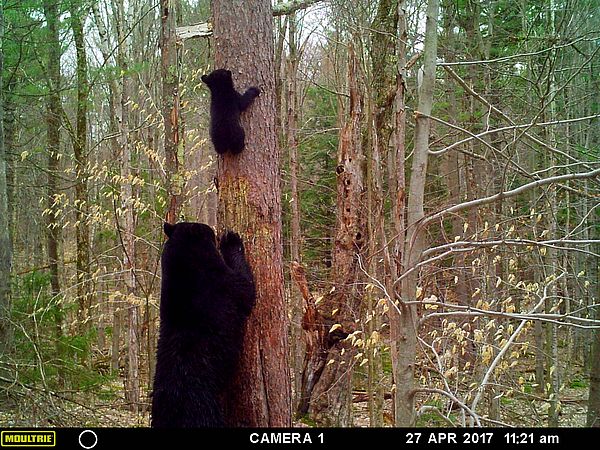Keeping Track Monitoring Program (KTMP) teams walk their transects once each season in order to look for sign of the various focal species which are monitored. Findings are recorded and then entered into the KTMP data base. The summer window for tracking is June 15th – July 31st.
As wonderful as it is to look for sign while enjoying the splendors of summertime - including lush greenery, wildflowers, singing birds, warmth, sunshine (well, at least some of the time!) – summertime tracking provides some challenges when it comes to certain elements of the tracking experience. Gone is the possibility of seeing clear footprints in a lovely blanket of snow, something which is a real treat to trackers on winter and spring outings. Although it’s possible to find tracks on summer’s dry, bare ground, tracks tend to be more readily spotted in muddy sections or along the shores of bodies of water where the soil is damp.
Thankfully, despite the name, “tracking” isn’t just about “tracks”. In addition to tracks, teams are on the lookout for plenty of other wildlife signs during their outings throughout the year. These include, among others, scat (definitely a year ‘round occurrence!), feeding sign, hair, carcasses, rubs, barking of trees, bedding sites, dens, scent posts, and other markings.
Although it’s more challenging to see tracks (other than in wet soil), there are certain signs which tend to be more prevalent during the summer. For instance, it’s been noted by wildlife biologists that bear marking on trees peaks during the bear breeding period of June and July. (1) Therefore, summer is a great time for trackers to find evidence of recent bear tree marking behavior, including fresh claw marks, bite marks and pieces of fur left on marking trees from rubbing.
Another example is the use of “babysitter trees” by bears for cubs’ safety. In the early summer, the forbs, sedges and grasses found in wetlands are a great source of food for the mother bear. While she’s feeding, though, she needs a safe place for her cubs to stay. “Babysitter trees” are a wonderful option for this. The mother sends the cub(s) up the tree to wait until she returns for them. (2)
Tracking teams know to look for indications of the use of these “babysitter” trees. As an example, one of the KTMP teams found that a large hemlock on the edge of a steep drop off had bear claw marks on it, and there were bear scats of various sizes near its base. Some were quite large (from adult[s]) and the others were much smaller (from cub[s]). The tree was on the edge of a rise above a wet area and provided a good vantage point and plenty of shade. It would have been an ideal spot for a mother bear to feed nearby while her cub(s) stayed safely in the tree. It would also have been a cool place to be during summer heat given the shade and the nearby stream. The team agreed that this tree had very likely been used as a “babysitter tree”.
Those are just a couple of examples of the differences in the tracking experience based on the season. Although KTMP teams have been trained to know where to look and what to look for throughout the year, there’s no telling what they’ll find each time they go out. That’s one of the exciting things about tracking! There probably won’t be any fresh tracks in fresh snow this summer, but there will likely be plenty of other sign for them to spot and record. Regardless of what they find, hopefully all of the trackers will enjoy a lovely summer day, taking in the beauty and wonder of this amazing area about which we all care so deeply. Happy Tracking and Happy Summer!
Susan C. Morse, “Tracking Tips” (Bear Marking) from Keeping Track, Inc. Readings and Resources
Susan C. Morse, “Tracking Tips” (Babysitter Trees) from Keeping Track, Inc. Readings and Resources
